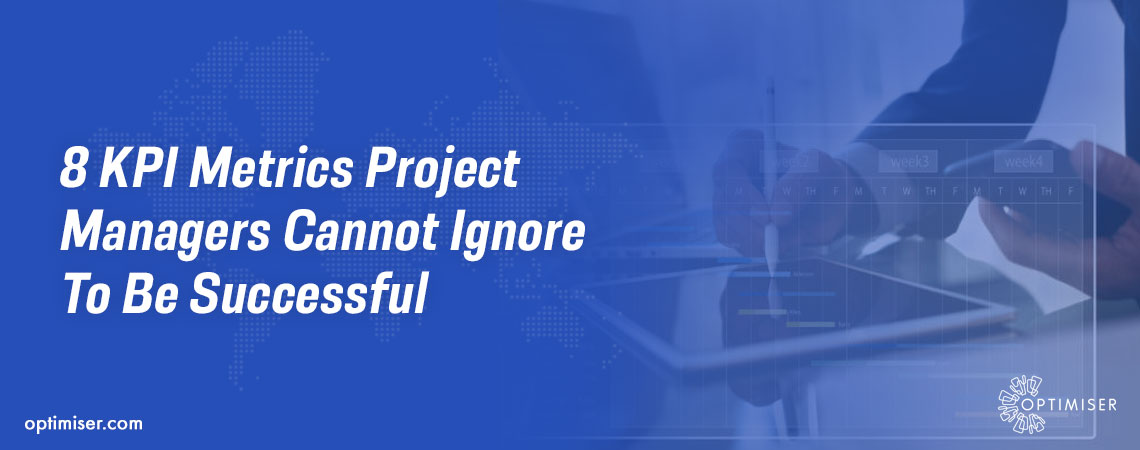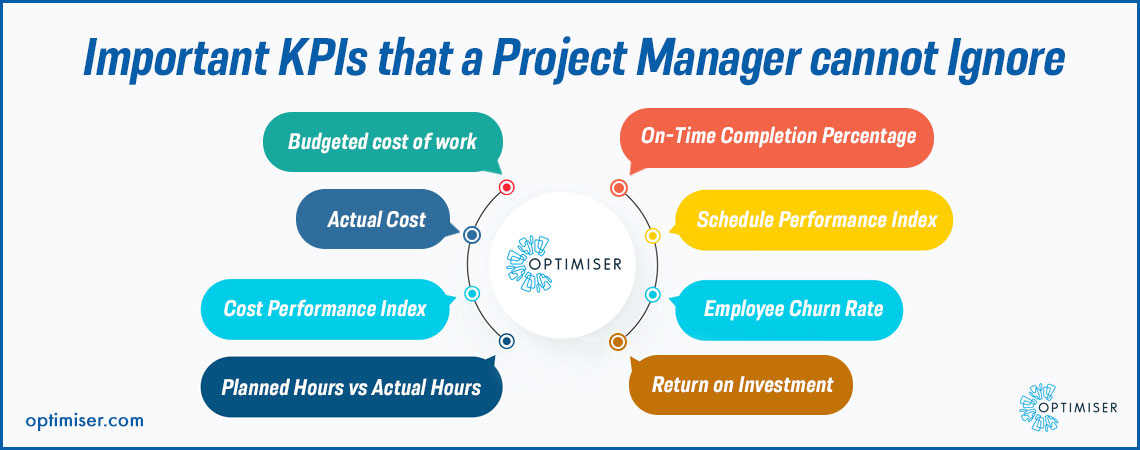
8 KPI Metrics Project Managers Cannot Ignore to be Successful
KPI is a performance measurement that is widely used by organisations to determine the success of a project, product, idea, or initiative. Project managers can use these to understand the project performance as well as its progress. It looks into the targets achieved till the date of an evaluation and can even be used to predict future profitability from the said project.
KPIs include the following factors, they are not limited to it but are considered because of typical considerations that are made by project managers:
1. Time
2. Budget
3. Quality
4. Efficacy

Important KPIs that a Project Manager cannot Ignore
1. Budgeted cost of work
The budgeted cost of work that is scheduled is also known as the planned value. It is the estimated planned value of the tasks that are to be performed within a specific period of time for this KPI to be measured. It is essentially a budget planner for the rest of the project.
2. Actual Cost
Actual cost KPI measures the cost that has been incurred in the project till the date of evaluation. The expenditure value is in conjunction with the planned cost if the project has managed to remain within the budget.
3. Cost Performance Index
The Cost performance index is the comparison drawn between the budgeted cost and the actual cost of the project. It is the measure of efficiency in terms of time and money.
It is also used to set future budgets and make informed decisions about the budgeted cost of work that is scheduled.
4. Planned Hours vs Actual Hours
This KPI looks into the initial plan that was drawn out for the estimated hours that will be spent on the project and achieving specific targets within that period
Then it is compared to the actual amount of time that was invested into the project and how much time it took to achieve the targets. Usually, when the actual time spent is lesser than the planned time, it suggests that the project is ahead of its schedule. On the other end, if the planned time is greater than the actual time, it means there is an issue with time management as well as allocation of resources, either one being the reason why the project is behind schedule.
5. On-Time Completion Percentage
Since the projects do not work on the waterfall system of the management anymore, it means that the smaller tasks in the project can be tackled by the team. Every task has its own competing date. And given that, the On-time completion percentage looks into the percentage of tasks that were finished within their deadlines.
Used to contextualise previous KPIs, a low percentage can suggest that there exists a structural issue at the level of assignments and the tasks that are being accomplished within the team.

6. Schedule Performance Index
Schedule Performance Index looks at the overall project and then presents a value that is close to 1. Through this, project managers can determine whether the project is ahead of its schedule or behind it. If the value is less than 1, it means the project is running behind. However, if the value is greater than 1, it means the project is running ahead of its schedule. And getting the value as 1 means that the project is following the planned schedule.
7. Employee Churn Rate
This rate covers the rate at which the employees are leaving the project or the company. A high churn rate can point towards a poor working condition that can include mismanagement and/ or a hostile working environment. In this case, it is time to look into the project closely and try to mend the situation as soon as possible with much-needed discretion. A low churn rate points towards employee satisfaction and excellent management within the project.
Optimiser's Project Management Suite comes with the top tools and AI-enabled automation as well as forecasting. You can leverage these functions to your advantage to view the project from a bird's eye view as well as a close-up perspective.
8. Return on Investment
ROI or return on investment is an important KPI as well as the broadest one on this list. It looks at the project and works out its worth. It is the measure of the profit that was made from the project versus the resources that were used from within to achieve the goals. ROI is a long-term metric. However, you can use ROI before the project to see the future profitability of the project.
Summary
KPIs are useful for the evaluation and assessment of projects. Providing quantified data, KPIs allow good decision making based on data-driven statistics. Once you have selected the KPIs that work best for your project, you can expect better results and improved standards that are in tune with the success of your project.

30 days free trial. No credit card required
 One powerful platform
One powerful platform
 Simple to use
Simple to use
 Comprehensive
Comprehensive



